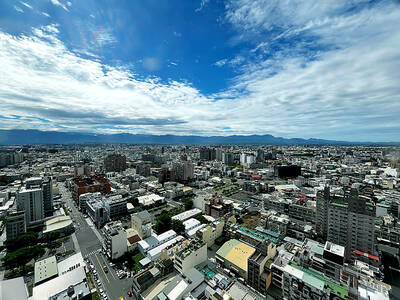Asian countries may benefit from capital controls to help limit inflows that pose a risk to their economies and financial systems, according to the Asian Development Bank (ADB).
Authorities should consider “the full array of policy measures available in their toolkit,” the Manila-based lender said in a report published yesterday. The Asia Capital Markets Monitor recommended “temporary and targeted” restraints on incoming investment in addition to encouraging outflows.
“Volatile capital flows pose a significant risk, affecting both macroeconomic management and overall financial stability,” ADB vice president B.N. Lohani said in a speech in Seoul yesterday. “The return of capital flows is welcome. But large and sudden capital movements can put the sustainability of economic recovery at risk.”
The recommendation comes after the IMF last month voiced its support for taxes on capital inflows to help stem excessive appreciation in some Latin American currencies. A UN agency this month also touted similar measures, saying China, India, Singapore, Indonesia and South Korea are most at risk to short-term capital swings.
Demand for higher-yielding assets in Asia has helped drive gains of more than 25 percent for Indonesia’s rupiah and South Korea’s won since the start of December 2008, the month the US Federal Reserve cut its benchmark interest rate to near zero.
The MSCI Asia Pacific Index of equities has risen 40.7 percent over the same period while government bonds gained 22 percent, based on HSBC Holdings PLC’s composite index of 10 Asian markets.
Net private capital inflows to Asia’s developing economies are expected to be US$272.4 billion this year, compared with US$282.9 billion last year, ADB said, citing a forecast by the Washington-based Institute of International Finance. The amount of money pouring into the region may strengthen as central banks from India to Malaysia start raising borrowing costs to fight inflation, widening the interest-rate differential with the US, Europe and Japan, ADB said.
Taiwan in November last year banned foreigners from parking their money in time-deposit accounts to counter speculation on its currency that may hurt exports. Brazil the month before slapped a levy on foreign purchases of stocks and bonds in a bid to restrain the real’s appreciation.
ADB estimates that foreign funds hold about 20 percent of stocks by value in Asia’s emerging markets. They owned 22.3 percent of local-currency government bonds in Indonesia, 13.3 percent in Malaysia and 3.9 percent in Thailand as of March 31, the report said.
South Korean deputy finance minister Yim Jong-yong said at a forum in Seoul yesterday that emerging economies should move to rein a surge in inflows of foreign-currency capitals that may pose a risk to their economies.
“Globally coordinated measures to stem volatile capital market moves will end the vicious cycle of foreign-exchange reserves build-up and worsening global imbalances,” Yim said.
South Korea can consider measures to levy taxes on short-term foreign capital inflows and tighten the regulations on local financial firms’ short-term external borrowings, Park Cyn-young, principal economist at the ADB, told reporters in Seoul.
Stock markets in Taiwan, South Korea and India have so far this year attracted more than US$14 billion from abroad, following net inflows of US$57.7 billion last year, exchange data show.

BYPASSING CHINA TARIFFS: In the first five months of this year, Foxconn sent US$4.4bn of iPhones to the US from India, compared with US$3.7bn in the whole of last year Nearly all the iPhones exported by Foxconn Technology Group (富士康科技集團) from India went to the US between March and last month, customs data showed, far above last year’s average of 50 percent and a clear sign of Apple Inc’s efforts to bypass high US tariffs imposed on China. The numbers, being reported by Reuters for the first time, show that Apple has realigned its India exports to almost exclusively serve the US market, when previously the devices were more widely distributed to nations including the Netherlands and the Czech Republic. During March to last month, Foxconn, known as Hon Hai Precision Industry

Taiwan Semiconductor Manufacturing Co (TSMC, 台積電) and the University of Tokyo (UTokyo) yesterday announced the launch of the TSMC-UTokyo Lab to promote advanced semiconductor research, education and talent development. The lab is TSMC’s first laboratory collaboration with a university outside Taiwan, the company said in a statement. The lab would leverage “the extensive knowledge, experience, and creativity” of both institutions, the company said. It is located in the Asano Section of UTokyo’s Hongo, Tokyo, campus and would be managed by UTokyo faculty, guided by directors from UTokyo and TSMC, the company said. TSMC began working with UTokyo in 2019, resulting in 21 research projects,

Ashton Hall’s morning routine involves dunking his head in iced Saratoga Spring Water. For the company that sells the bottled water — Hall’s brand of choice for drinking, brushing his teeth and submerging himself — that is fantastic news. “We’re so thankful to this incredible fitness influencer called Ashton Hall,” Saratoga owner Primo Brands Corp’s CEO Robbert Rietbroek said on an earnings call after Hall’s morning routine video went viral. “He really helped put our brand on the map.” Primo Brands, which was not affiliated with Hall when he made his video, is among the increasing number of companies benefiting from influencer

Taiwan’s property market is entering a freeze, with mortgage activity across the nation’s six largest cities plummeting in the first quarter, H&B Realty Co (住商不動產) said yesterday, citing mounting pressure on housing demand amid tighter lending rules and regulatory curbs. Mortgage applications in Taipei, New Taipei City, Taoyuan, Taichung, Tainan and Kaohsiung totaled 28,078 from January to March, a sharp 36.3 percent decline from 44,082 in the same period last year, the nation’s largest real-estate brokerage by franchise said, citing data from the Joint Credit Information Center (JCIC, 聯徵中心). “The simultaneous decline across all six cities reflects just how drastically the market